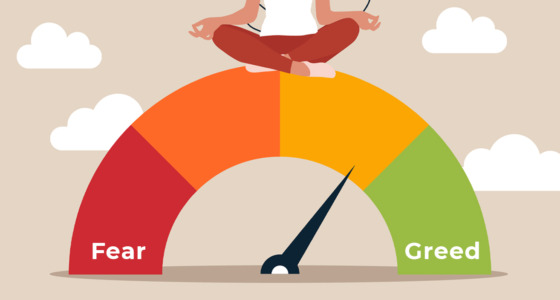

As an investor looking to add options to your portfolio, you have a key decision to make: do you buy to open or buy to close? Both allow you to trade options contracts, but they serve very different purposes. It’s important to understand how they differ so you can choose the right one for your goals. Buying to open means purchasing an options contract to initiate a new position. This allows you to gain exposure to the underlying stock and benefit if it moves in a favorable direction. Buying to close means purchasing an existing contract to exit an open position. This is done to realize your gains or losses and close out your trade. Whether you want to speculate on stock price moves or hedge an existing position, options provide opportunities. Choosing between buying to open or close depends on if you want to establish or exit an options trade. Understanding these basics will set you up for success as you embark on options trading.
What Is a Call Option?
A call option is a contract that gives you the right, but not the obligation, to buy a stock at a specific price within a certain time period.
When you buy to open a call option, you are purchasing the right to buy 100 shares of the underlying stock at the strike price. The strike price is the price at which the option allows you to buy the stock. If the stock price rises above the strike price, the call option increases in value. You can then sell the call option for a profit in a buy to close transaction.
Conversely, if you buy to close an existing call option, you are purchasing someone else’s right to buy the stock at the strike price. You would do this if you expect the stock price to continue increasing. By buying to close, you now have control of the call option and can exercise it to buy shares of the stock below the current market price or sell it for a profit if the stock price continues to rise.
The main differences between buying to open and buying to close are:
- When you buy to open, you pay the option premium upfront for the right to potentially buy shares later. When you buy to close, you pay the current option premium to take over someone else’s option contract.
- Buying to open initiates a new option position. Buying to close closes out an existing position by taking an offsetting opposite trade.
- Buying to open has unlimited profit potential if the stock price rises significantly. Buying to close has limited profit potential since the option already has an established value.
In summary, whether to buy to open or buy to close depends on if you want to create a new option position or take over an existing one. Both strategies can be used to speculate or hedge risk, so choose based on your investment objectives and outlook on the underlying stock.
Understanding Buy to Open vs Buy to Close
When purchasing call options, you have two choices: buy to open or buy to close. The decision depends on your investment objectives.
Buy to Open
If you believe the underlying stock price will rise, you may choose to buy a call option to open a new position. This allows you to control 100 shares of the stock at a fixed price (the strike price) for a limited time (until the expiration date).
To open a call option position, you pay an upfront premium for the right to buy shares at the strike price. If the stock price increases above the strike price, the option gains value. You can then sell the option for a profit before expiration or exercise your right to buy the shares at the strike price and sell them for a gain. However, if the stock price stays flat or declines, the option may expire worthless and you lose the premium paid.
Buy to Close
If you already own call options, you may choose to buy identical options to close your position before expiration. This allows you to lock in any gains (or losses) and avoid further price fluctuations. The primary reason to close a position early is to realize profits or limit losses.
For example, say you bought call options with a $50 strike price for $3 per share (a $300 total premium). If the options later trade for $6, you can buy to close at that price and pocket the $3 per share difference minus fees, for a total gain of $300. However, if the options drop to $1, you can buy to close to limit losses at $200.
In summary, buy to open initiates a new call option position, while buy to close exits an existing position. The choice depends on your market outlook and risk tolerance. With options, you can benefit from price moves in the underlying stock, but you must also manage risk carefully.
When to Buy a Call Option to Open
When buying call options, you have two choices: buy to open or buy to close. Buying a call option to open means you are opening a new position, while buying to close means you are closing an existing short position. For most investors buying call options to speculate on stock price increases, buying to open is the appropriate choice.
Buying a Call to Open
When you buy a call option to open, you are initiating a new bullish position. This means you expect the underlying stock price to rise. By buying a call, you obtain the right – but not the obligation – to purchase shares of the underlying stock at the strike price on or before the expiration date. If the stock price increases above the strike price, the value of your call option will increase. You can then sell the call for a profit or exercise your option to buy the stock at the lower strike price and then sell at the higher market price.
For example, suppose Stock XYZ is trading at $50 per share. You buy a call option with a strike price of $55 that expires in 3 months. If Stock XYZ rises to $60 over the next month, the value of your call option will increase significantly. You can sell the call and pocket the profit or exercise the option to buy XYZ at $55 per share and then sell at the $60 market price. Either way, you make money on the trade since you guessed correctly that the stock price would rise.
Conversely, if Stock XYZ drops to $45, your call option will expire worthless at expiration. Although you lose your entire investment in the call premium, your losses are capped since you did not actually buy the stock. This limited risk is the main benefit of buying call options versus buying stocks outright.
In summary, buy a call option to open if you believe the underlying stock price will rise and want to speculate on potential gains with limited downside risk. Do thorough research to determine the best strike price and expiration based on your forecast and risk tolerance. With the right timing and a bit of luck, buying calls to open can lead to substantial profits.

When to Buy a Call Option to Close
When buying call options, you have two choices: buy to open or buy to close. Buying a call option to close means you are closing out an existing short call position. This is done when you believe the underlying stock price will increase, and you want to exit your short call position to avoid further losses.
Why Buy a Call Option to Close?
There are a few reasons why an investor may choose to buy a call option to close:
- To exit an existing short call position and avoid additional losses if the underlying stock price rises. By buying the same call option contract to close, you are eliminating your short position.
- To lock in profits from a short call position. If the value of the call option you sold short has declined, buying to close will allow you to buy it back at a lower price and keep the difference as profit.
- To avoid exercise if the option is in-the-money. As expiration approaches, buying to close will eliminate the risk of having the short call option exercised and being forced to sell 100 shares of the underlying stock per contract at the strike price.
When buying a call option to close, you want to buy the exact same contract you previously sold short. This means the same underlying stock, same expiration date, and same strike price. The goal is to offset your existing short position, not open a new long position. Carefully compare the details of the contract before buying to ensure you are closing the correct short call.
Buying a call option to open establishes a new long call position, while buying to close eliminates an existing short call position. Understanding when each choice is appropriate can help you strategically use call options to benefit your overall investing objectives. Whether buying to open or close, always do thorough research on the underlying stock and option contract terms to make an informed choice.
Tax Implications of Buying Calls to Open vs Close
When buying call options, it’s important to understand the tax implications of buying to open versus buying to close. The tax treatment differs depending on which action you take.
Buying to Open
If you buy a call option to open a new position, any gain or loss from selling the call will typically be treated as a capital gain or loss. Capital gains and losses are reported on Schedule D of your tax return. Short-term capital gains (for assets held one year or less) are taxed at your ordinary income tax rate. Long-term capital gains (for assets held more than one year) are taxed at lower long-term capital gains tax rates.
When you buy a call option to open, the premium you pay is not deductible. However, the premium can be added to your cost basis in the call option. Your cost basis is used to determine your capital gain or loss when you sell the call. For example, if you pay $500 in premiums to buy a call option and sell it for $700, you would have a capital gain of $200 ($700 sale price – $500 cost basis).
Buying to Close
If you buy a call option to close an existing short position, any gain or loss will typically be treated as ordinary income or loss. Ordinary gains and losses are reported on Schedule 1 of your tax return and taxed at your ordinary income tax rates.
When you buy a call option to close, the premium you pay reduces your ordinary income or increases your ordinary loss. For example, if you are short a call option with a premium of $500 and you buy to close that call for $700, you would have an ordinary loss of $200 ($500 short premium – $700 buy to close premium).
In summary, buying call options to open typically results in capital gains and losses, while buying to close typically results in ordinary gains and losses. The tax treatment of your options trading can have a significant impact on your tax liability, so you should understand these rules before trading. You may also want to consult a tax professional to determine the best strategies based on your specific financial situation.
Rolling Options From Open to Close
Once you have opened a call option contract, you have a few choices on how to proceed. You can hold the contract until expiration, exercise the option to buy the underlying shares, or roll the option from open to close. Rolling an option means closing your existing open contract and opening a new contract with a later expiration date. This allows you to extend the time period of your option.
Rolling options from open to close provides several benefits:
- It allows you to continue your position in the option for a longer time frame. This gives the option more time to become profitable or move in your favor.
- It enables you to avoid expiration. By rolling to a later expiration, you avoid having the option expire worthless or having to take action at expiration.
- It may allow you to adjust the strike price. When rolling, you can choose a new strike price that is better suited to your outlook or risk tolerance. You can roll up to a higher strike price or down to a lower strike price.
- It provides an opportunity to take profits or cut losses. If the option has become profitable, you can roll up to a higher strike price and take profits. If the option is losing money, you can roll down to a lower strike price to cut your losses.
To roll an option, you must first close your existing open position. Then open a new option contract with the desired expiration date and strike price. Be aware that there are transaction costs involved with closing one position and opening another. Also, the new option may be more expensive than your original option due to a rise in volatility or the passage of time.
Carefully consider your reasons for rolling before taking action. Make sure the benefits of gaining more time or adjusting the strike price outweigh the costs involved. Rolling options in a systematic way can be an effective strategy, but roll only when it makes sense based on your market outlook and risk tolerance. With experience, you’ll determine when rolling is right for you.
Exercising Call Options Before Expiration
Once you have purchased call options, you have two choices: exercise the options before expiration or let them expire worthless. Exercising your call options means using your right to buy the underlying stock at the strike price. This allows you to buy the shares at a discount from the current market price. However, it also requires you to have enough capital to purchase the shares.
When to Exercise Early
There are a few situations where exercising call options early may be advantageous:
- The underlying stock price has risen well above the strike price. By exercising early, you can buy the shares at a lower cost basis and potentially sell them at a profit.
- There are dividends expected on the underlying stock. By exercising early and purchasing the shares, you can collect the dividends. The value of the call options will drop by the dividend amount if they are not exercised before the ex-dividend date.
- There is high volatility in the stock price and you want to lock in profits. The call options can quickly lose value if the stock price falls back below the strike price. Exercising early guarantees you can buy at the agreed upon strike price.
- There are tax advantages to exercising the call options in the current year. For example, if you have capital gains or losses to offset.
However, exercising call options early also has some potential downsides to consider:
- You need enough capital to purchase the shares at the strike price. If you do not have enough money in your brokerage account, you will have to come up with the funds from another source.
- There is still time value remaining in the call options. By exercising early, you lose any remaining time value in the options. It may be more profitable to sell the options instead of exercising them.
- The stock price may continue to rise after you exercise. Although you were able to buy the shares at a discount, you lose the potential for further profits if the price continues increasing. The call options would have allowed you to benefit from any price rise up until expiration.
In summary, exercising call options early can be the optimal choice in some situations. However, it requires capital to buy the shares and results in losing any remaining time value in the options. Carefully consider your financial situation, risk tolerance, and reasons for purchasing the call options before deciding to exercise early or let them expire.
Trading Strategies Using Buy to Open and Buy to Close
There are two main ways to trade options using the buy to open and buy to close positions:
Speculation
If you believe the price of the underlying stock will rise or fall significantly in the near future, you can buy call or put options to speculate on the price movement. To open a speculative position, you buy a call to open or buy a put to open. For example, if you expect the stock price to rise, buy a call option. If the stock price does increase substantially, the value of your call option will also increase. You can then sell the call to close the position and realize the profit.
Conversely, if you expect the stock price to fall, buy a put option. If the price does decrease notably, the put option value will increase and you can sell to close for a profit. Keep in mind that speculative options trading is very risky, as you could lose your entire investment if the stock price does not move as anticipated. Only trade with money you can afford to lose.
Hedging
Options can also be used to hedge an existing stock position to reduce risk. If you own shares of stock, you can buy put options as insurance in case the stock price declines. For example, if you own 100 shares of XYZ stock currently valued at $50 per share, you may buy a put option with a strike price of $45. If the stock price drops to $40, the put option will gain in value. You can then sell the put to close and collect the profit to offset some of the unrealized loss in the stock position. The put option acts as protection in case the stock price falls.
Conversely, if you are short shares of stock, call options can be purchased to hedge. The call option value will rise if the stock price increases, allowing you to close the call for a profit that offsets losses in the short stock position. In both cases, the options are used defensively to minimize risks in the overall trading strategy.
The choice between opening or closing a position depends on your market outlook and risk tolerance. Understanding how options work and gaining experience through small trades will help determine the right approach for your own trading objectives. With practice, you can become proficient using options to speculate or hedge.
FAQ on Buying Calls to Open vs Close
FAQ on Buying Calls to Open vs Close
When buying call options, you have two choices: buying to open or buying to close. Understanding the difference between these strategies can help determine which approach is right for your investment needs.
Buying a call option to open means purchasing a new call contract to establish a new position. This allows you to control 100 shares of the underlying stock for a fraction of the cost. You can profit if the stock price rises above the strike price of the call option. Many investors will buy calls to open when they expect the stock price to rise and want to leverage their capital.
On the other hand, buying a call to close means purchasing an existing call option contract to offset an open short call position. This is done to exit or close an open call option short sale. Investors who have previously sold short calls may buy to close if the stock price rises and they want to exit the position to avoid further losses or margin calls. Buying to close allows you to nullify the contract obligations of the short call position.
When determining whether to buy calls to open or close, consider your investment objectives and risk tolerance. Buying to open establishes a new call option position and provides the opportunity for gains if the stock price rises. Buying to close offsets an existing short call position to exit the trade and avoid potential losses. Both strategies provide leverage and risk, so conduct thorough research on the underlying stock and option contracts prior to trading.
In summary, buying call options to open or close depends on your current position and goals:
•Buy to open – Establish a new call option position for potential gains. Requires capital outlay and risk.
•Buy to close – Offset an existing short call position to exit the trade. Requires capital outlay to cover potential losses.
Whether you buy to open or buy to close call option positions, make sure you fully understand the risks and rewards before trading derivatives. With proper education and risk management, call options can provide an opportunity to generate income and enhance portfolio returns.
Conclusion
As you have seen, there are advantages and disadvantages to both buying call options to open new positions or buying to close existing short positions. The choice comes down to your investment objectives and risk tolerance. If you are bullish on a stock and want to gain exposure, buying to open is likely your best choice. The risks are higher but so are the potential rewards if the stock price increases. On the other hand, if you want to exit an existing short position to lock in profits or limit losses, buying to close is the appropriate strategy. Whichever direction you go, make sure you fully understand the risks of options trading and have a well-developed trading plan in place. Educate yourself on options pricing, the Greeks, and hedging strategies to become a more sophisticated investor. With knowledge and experience, you can leverage options to help meet your investment goals. The ball is in your court – open or close, the choice is yours.













